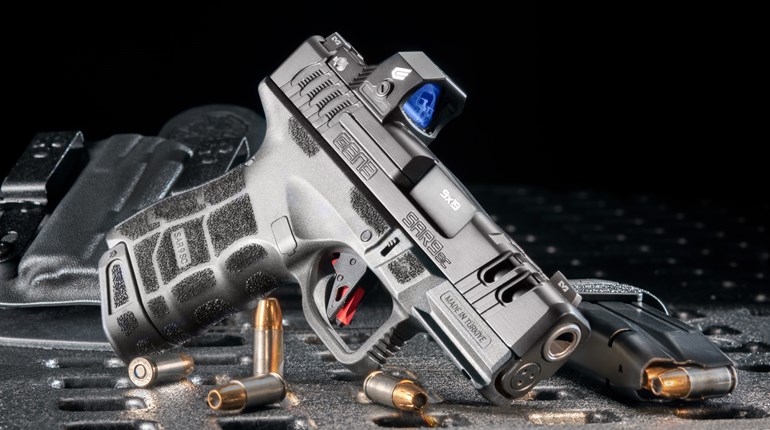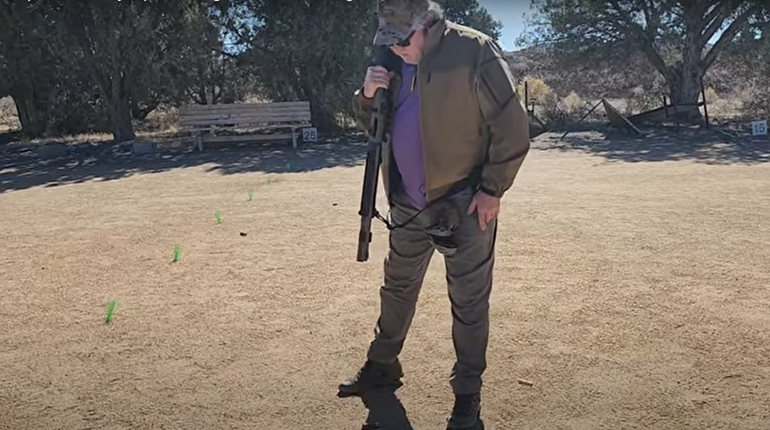
What is one of the biggest changes in shooting in the last generation? Bonded bullets? High capacity? Polymer pistols? Nope, the rules. As in: The four rules. (See below for the full set.)
Codified by the late Jeff Cooper, at Gunsite, the four rules of safe gunhandling have been passed on by every shooter through Gunsite, and beyond, to the point that there are people who don’t know where they originated. A lot of shooters just know them, kind of like the background microwave radiation: it has always been there.
Well, they weren’t.
When I started shooting, back in the neolithic era, you had to be safe, but the “rules” were a catch-all of each shooter’s experiences. Some knew some, some obeyed others. My learning is an example. My late father was almost shot by a fellow solder, in a farmhouse in Belgium while getting ready to go out on patrol, due to the fact that the other G.I. was not paying attention to the muzzle. As a result, two decades later, one of the sharpest rules dad instructed us on was keeping the muzzle pointed in a safe direction.
But someone else, whose father hadn’t had that experience, might not care about muzzles. And yes, life on ranges, and hunting, back then, could be scary.
The four rules are not just a quick recitation of the basics, but an interlocking set of rules that are both safety and custom, manners and security, respect and obligation.
- Rule One is simple: you treat all firearms as if they were loaded. Again, my father was an exemplar here, but his instruction came in a broader scale: “All guns are loaded, all dogs bite, all snakes are poisonous.” If you treat all guns as loaded, then you won’t have a problem when one of them really is. Ditto dogs and snakes.
- Rule Two buttresses Rule One, and adds a layer of protection. Since you treat them as if they were loaded, you obviously don’t point them places they ought not to be pointed.
- Rule Three works in support of Rules One and Two, since it is highly unlikely that a firearm will discharge if you keep your finger off the trigger.
- And Four? One of our club members lost his cell phone (back in the early flip-phone era) when he dropped it on the range, and plinked at what was obviously just another tin can downrange. If he had remembered that he hadn’t tossed that many cans out, and walked back downrange to investigate “That shiny thing” before shooting it, he would not have had to replace his phone. Breaking Rule Four can be worse than just anew phone.
Now, you will see posters, T-shirts, handouts and range rules that list more than the four, you can see five, eight, 10 or 20 rules when you include range rules, which can be sort of like Home Field Rules used to be in baseball “The big oak tree in right field is foul-ball territory.”
If your gun club insists that you not shoot targets lying on the ground, that’s a home field rule. It is time-and-place specific, and not part of The Four. They should be listed separately, not all lumped onto a poster with The Four.
The beauty of The Four is that you can shoot anywhere, use the four rules and be safe. And, the reinforcing aspect keeps you safer. If you break a rule, you can be ejected from a match, range or club, but it is unlikely someone will be hurt. It might just be an embarrassing episode, like my club member. (No, it wasn’t me, I didn’t have a cell phone back then.) Break two of them, and the risk of injury goes up.
The rules work, so stop trying to “improve” them. Don’t re-write them, don’t go adding paragraphs of extras to each, and keep the home field rules separate.
The Four Rules are now so deeply ingrained in good shooters that we gun writers regularly get letters, emails and comments complaining when it looks like we’ve broken one of them. Odds are, we haven’t, but it is good to be reminded. They are that important.
The late colonel got them right, he put them in the right order, and he knew how to use the English language. Learn them, and leave them alone.
Rule One: Treat all guns like they are always loaded.
Rule Two: Never let the muzzle cover anything which you are not willing to destroy
Rule Three: Keep your finger off the trigger until your sights are on the target
Rule Four: Always be sure of your target and what's behind it.


































